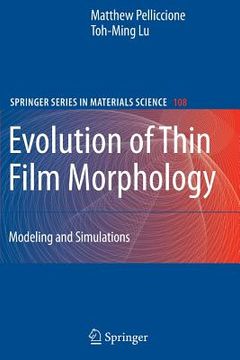Synopsis "evolution of thin film morphology: modeling and simulations"
Thin?lmdepositionisthemostubiquitousandcriticaloftheprocessesusedto manufacture high-tech devices such as microprocessors, memories, solar cells, microelectromechanicalsystems(MEMS), lasers, solid-statelighting, andp- tovoltaics. The morphology and microstructure of thin ?lms directly controls their optical, magnetic, and electrical properties, which are often signi?cantly di?erent from bulk material properties. Precise control of morphology and microstructure during thin ?lm growth is paramount to producing the - sired ?lm quality for speci?c applications. To date, many thin ?lm deposition techniques have been employed for manufacturing ?lms, including thermal evaporation, sputterdeposition, chemicalvapordeposition, laserablation, and electrochemical deposition. The growth of ?lms using these techniques often occurs under highly n- equilibrium conditions (sometimes referred to as far-from-equilibrium), which leads to a rough surface morphology and a complex temporal evolution. As atoms are deposited on a surface, atoms do not arrive at the surface at the same time uniformly across the surface. This random ?uctuation, or noise, which is inherent to the deposition process, may create surface growth front roughness. The noise competes with surface smoothing processes, such as surface di?usion, to form a rough morphology if the experiment is performed at a su?ciently low temperature and / or at a high growth rate. In addition, growth front roughness can also be enhanced by growth processes such as geometrical shadowing. Due to the nature of the deposition process, atoms approaching the surface do not always approach in parallel; very often atoms arrive at the surface with an angular distri

